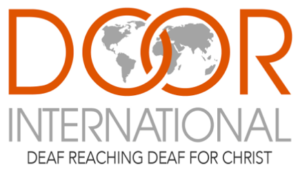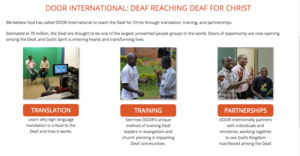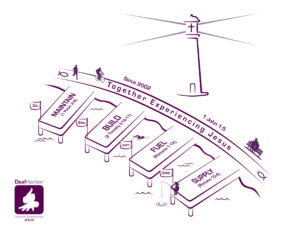For families visiting God Loves Deaf Kids
Last Modified: March 8, 2019
The God Loves Deaf Kids app and website are owned and operated by Silent Blessings Deaf Ministries. Silent Blessings is a nonprofit organization with a mission to bring people, both deaf and hearing, into a profound encounter with the reconciling love of God through Jesus Christ. We are committed to protecting the privacy of your family and your children. This privacy policy outlines how we use, share, and protect the information about you and your family, who may include children under the age of 13 or 18.
There are two forms that we collect your personal information: through information you submit in our “Contact Us” feature, and through anonymous data automatically sent to us about your devices and use of our services.
Contact Us
We enjoy hearing feedback from our fans. If you choose to contact us, a form will appear asking for personal information such as your name, gender, age, state or country, and email address. You are not required to fill out any of these if you do not feel comfortable disclosing that information. If an email address is provided, our staff will reply to the correspondence. We will not ask more personal information thereafter and will not use the information provided for any purpose that has not been overtly expressed. We may, however, use first names, ages, your state or country, and comments in promotional advertisements as a testimony to our services. If you do not wish for your information to be shared in this way, do not provide it on the Contact Us form.
Technical Data
Our platform automatically collects information about your device, such as the hardware model, operating system, and use of our services. We do this through the use of cookies, or small files saved to a user’s device to store records. This is used for internal data analytics for us to monitor the usage of our services, such as number of times each video is viewed, and to repair technical problems. You may choose to disable cookies in your device settings.
Will your information be shared?
God Loves Deaf Kids will not sell your information to third parties. We will only share information collected from you or your family in the following cases:
Promotional Advertisement. Your first name, age, state or country, and comments may be shared on our platform or to our donor base to provide testimony to our services.
Authorized third-party vendors. Third party vendors may have approved access to technical data to help us analyze data or improve services.
Business Transfers. In the unlikely event of a business transaction such as a merger, acquisition, or bankruptcy, any information collected may be sold or transferred. The new owner or buyer will be required to adhere to this Privacy Policy.
Legal purposes. We may share your information in response to any court order or if we suspect illegal activity.
Contact
If you have any questions or concerns about this Privacy Policy, please contact us at:
1-877-367-3323
Silent Blessings Deaf Ministries
8930 Bash St, Suite E
Indianapolis, IN 46256



